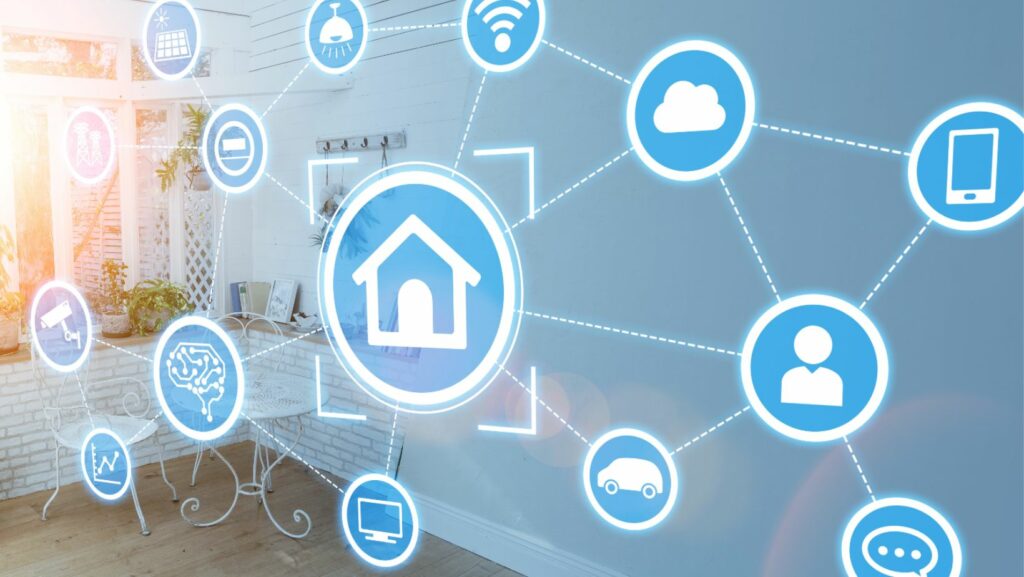The concept of a smart home has quickly evolved from a futuristic dream to an accessible reality, offering homeowners enhanced convenience, efficiency, and control. A smart home integrates various devices and systems into a cohesive network, automating tasks, improving energy management, and boosting security. Let’s explore the architecture of smart home systems, how they function behind the scenes, and the technologies that power them.
What is a Smart Home System?
A smart home system connects and controls household devices and appliances via the Internet, allowing remote management and automation. The primary goals are to enhance comfort, convenience, energy efficiency, and security. These systems can automate daily tasks, adjust settings based on user preferences, and provide real-time updates on the status of the home.
For instance, smart home technology can automatically adjust the thermostat based on your routine, turn off lights when rooms are unoccupied, or send alerts if a door is left unlocked. These capabilities are managed through a central hub or network, which orchestrates the interaction between devices.
The Central Hub: The Brain of the Smart Home
At the core of any smart home system is the central hub, or controller, which coordinates communication between different devices. This hub connects to the home’s Wi-Fi network, enabling it to manage other connected devices. The hub processes data, executes commands, and ensures the system operates efficiently. Users interact with the hub through mobile apps, voice commands, or dedicated control panels.

A prime example of such a hub is the Loxone Miniserver, which offers extensive control over home automation, including lighting, heating, and security. The Loxone Miniserver integrates various systems, ensuring that all components work together seamlessly.
Communication Protocols: The Language of Smart Homes
Effective communication between devices is essential for a smart home system, which relies on various protocols:
Wi-Fi: Widely used due to existing home networks, Wi-Fi allows easy setup and control via apps but can be power-intensive for battery-operated devices.
Zigbee and Z-Wave: These protocols are designed for home automation, operating on a mesh network that extends range and ensures reliability while minimizing power consumption.
Bluetooth: Commonly used for close-range devices like smart locks and speakers, Bluetooth is ideal for interactions that don’t require constant internet connectivity.
KNX: A robust, standardized protocol popular in Europe for building automation, KNX is used in complex installations where reliability and integration are critical.
Key Components of a Smart Home System
A smart home system comprises several essential components, including sensors, controllers, and actuators:
Sensors: These devices gather environmental data—such as temperature, light levels, and motion—and send it to the central hub for processing.
Controllers: These allow users to interact with their smart home system via apps, voice assistants, or control panels, sending commands to the central hub.
Actuators: Devices like smart lights, thermostats, and locks that carry out commands received from the hub, such as adjusting lighting or locking doors.
Security and Privacy in Smart Homes
As smart home systems become more prevalent, security and privacy concerns have grown. These systems are connected to the internet, making them vulnerable to hacking if not properly secured. It’s crucial to implement strong passwords, regularly update firmware, and use encryption to protect communication between devices.

Privacy is also a significant concern, particularly with devices that collect personal data, such as cameras and voice assistants. Understanding how data is collected, stored, and used by these devices and choosing systems with robust privacy controls is essential.
The Future of Smart Homes
The future of smart homes is promising, with advancements in artificial intelligence (AI), machine learning, and the Internet of Things (IoT) driving even greater automation and personalization. AI-driven systems could learn user preferences and automatically adjust settings to enhance comfort and efficiency.
Smart homes are also expected to play a significant role in the development of smart cities, where interconnected homes, businesses, and infrastructure work together to create more sustainable urban environments.
